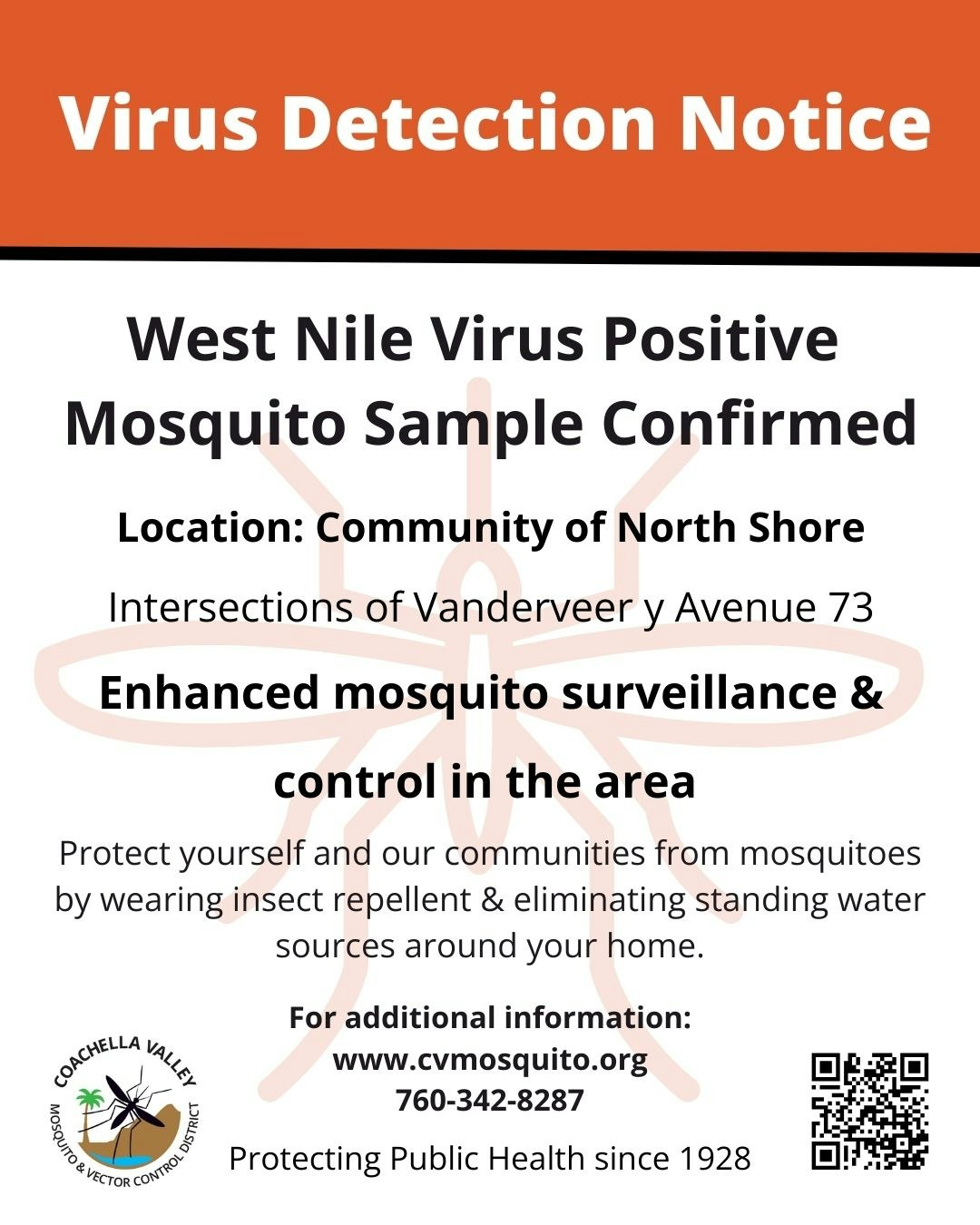West Nile Virus Positive Mosquitoes Detected in the Coachella Valley
This is the first positive West Nile Virus sample in the Coachella Valley in 2025
Posted on May 8, 2025
Coachella Valley, CA: The Coachella Valley Mosquito and Vector Control District (CVMVCD) has confirmed a West Nile Virus (WNV) positive mosquito sample in the community of North Shore. The positive sample was collected from a routine collection site near the intersections of Vanderveer and Avenue 73. This marks the first time a WNV positive sample is collected in 2025.
West Nile Virus (WNV) is endemic to the Coachella Valley and is primarily spread by native Culex mosquitoes, which are most active during the summer, especially at dawn and dusk.
To date, no human cases of WNV have been reported in California this year. For additional WNV information visit Westnile.ca.gov.
West Nile Virus is the leading cause of mosquito-borne disease in the United States. “To help prevent WNV transmission in the Valley, residents are encouraged to eliminate standing water around their homes by dumping and draining potential mosquito breeding sources and by using insect repellent when spending time outdoors,” says Jeremy Wittie, General Manager for the District.
The Coachella Valley Mosquito and Vector Control District is increasing mosquito surveillance and control treatments in the area to reduce the number of mosquitoes and interrupt further transmission of the virus.
About West Nile Virus
West Nile virus (WNV) spreads when a female mosquito bites an infected bird and then becomes a carrier. The infected mosquito can then transmit the virus to humans. Most people who contract WNV do not experience any symptoms. However, some may develop fever, headaches, and body aches. In more serious cases, hospitalization may be necessary, and in rare instances, the virus can be fatal. Anyone experiencing symptoms should contact their healthcare provider.
About CVMVCD
The Coachella Valley Mosquito and Vector Control District is a public health agency serving the Coachella Valley since 1928. The Agency’s mission is to enhance the quality of life by providing effective and environmentally sound vector control and vector-borne disease prevention programs.

